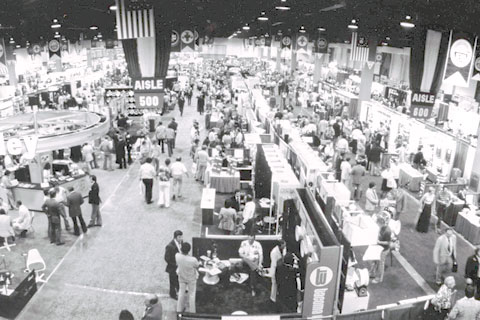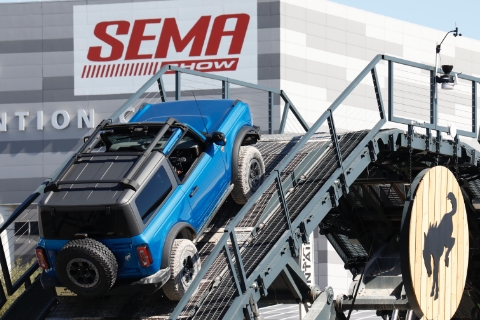SEMA News - February 2010
By Alysha Webb
Executive Vice President of the Tire Industry Association
 |
|
|
“I’m incredibly impressed at [SEMA’s] effort to bring everyone together. The show has become bigger and better,” said Roy Littlefield, TIA executive vice president. |
|
“The bottom line is communication,” said Littlefield. “The big companies want to feel like it is their show.”
Exhibitors at the Tire, Wheel & Equipment section of this year’s SEMA Show in Las Vegas numbered more than 290, down 5.1% compared to 2008. That drop was less than the 7.9% total decrease in exhibitors at the Show, but there was a worrisome trend: Many big tire manufacturers weren’t among the exhibitors.
The economy is part of the problem, but it goes beyond that, said Littlefield, 57, who has worked in the tire industry for three decades.
The SEMA Show has been TIA’s national show since 2004. It was a natural choice after TIA was formed in 2002 by merging the International Tire & Rubber Association (ITRA) and the Tire Association of North America. Littlefield went to his first SEMA Show in the mid-’80s, when he was executive director of the Washington/Maryland Service Station and Automotive Repair Association and a member of the ITRA. He has been to every SEMA Show since 2001.
“I’m incredibly impressed at [SEMA’s] effort to bring everyone together,” said Littlefield. “The Show has become bigger and better.”
Unfortunately, the SEMA Show’s size—tens of thousands of buyers attend—has made some tire manufacturers fear that they are getting lost in the crowd, said Littlefield. “Part of the concern is that this Show is so big that the tire section lost its identity,” he said.
Initially the tire industry companies were excited about being part of the SEMA Show, said Littlefield. It represented a chance for manufacturers to meet with suppliers and each other, see new stuff and learn from seminars and colleagues. Indeed, tire and wheel buyers account for the largest SEMA Show attendee category, and their numbers are rising. In 2009, 5,237 registered tire and wheel buyers attended, up from 5,016 in 2007.
This year, more than 290 tire industry companies exhibited at the Show. The tire manufacturers are the ones who are leaving. There are several issues, said Littlefield.
Tire manufacturers spend from $600,000–$5,000,000 a year to be at the SEMA Show, said Littlefield. With that kind of investment, “they want to be able to show all their tires,” he said. Yet they can show only their passenger and retail product lines at the SEMA Show. That leaves out commercial, truck, off-road, agricultural and airline tires as well as retreading truck tire equipment. Manufacturers would also like the SEMA Show to be open to consumers for a few hours, said Littlefield. They see consumers when they participate in auto shows, but at the SEMA Show, “They are only seeing their current customers,” he said.
Bringing the manufacturers back is certainly possible, said Littlefield. And doing so may not take a lot of big things, he said. Maybe it’s just listening more, hearing their concerns and coming up with simple procedures to make things easier for tire manufacturers.
That seems to be happening.
A focus group of top tire manufacturers met recently with TIA executives and SEMA President and CEO Chris Kersting. “We hope it won’t be a one-time meeting,” said Littlefield.
Frequent management changes at TIA—a merger and three executive vice presidents in four years—haven’t helped the communications issue, admited Littlefield. With the focus group, “I think we are on the right track,” he said.
There are many advantages to working closely with SEMA, said Littlefield. For one, it gives the two organizations a stronger voice in Washington, he said. Littlefield should know; he worked on Capitol Hill for four years and currently lobbies for the tire industry.
A trade show competitor is looming on the horizon: In 2010, Crain Communications is expanding its tire technology show to include more than just technology. But Littlefield foresees continuing TIA’s relationship with SEMA.
SEMA and TIA should be working together, Littlefield said: “It’s a natural alliance.”



